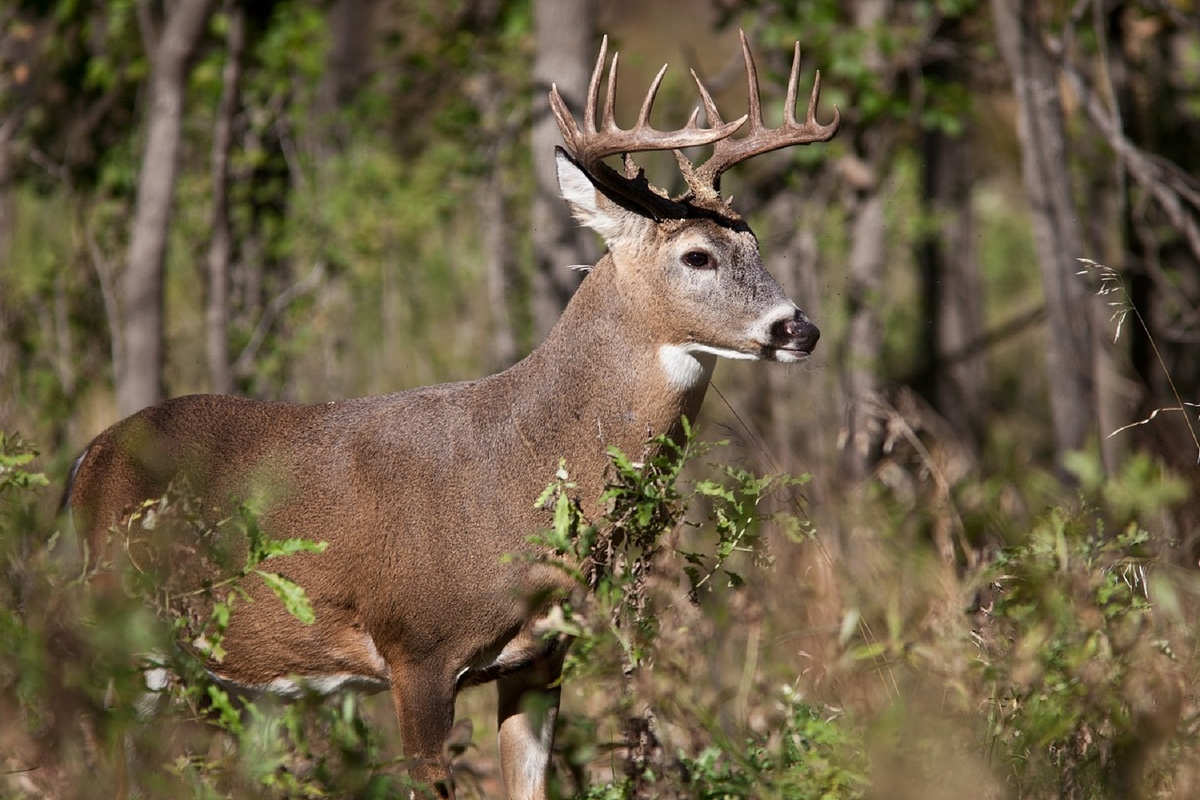
A white-tailed deer, one of the species affected by chronic wasting disease. While the disease is incurable, new findings by UAlberta researchers are helping us better understand how to reduce the spread of the infection. Photo used under CC 2.0.
A fatal disease in wild deer populations, in the same family as mad cow disease, has no cure. But University of Alberta scientists are making progress in understanding chronic wasting disease, and have discovered a property in soil that can help reduce the spread of the infection.
Chronic wasting disease (CWD) affects mule deer, white-tailed deer, moose, elk, and caribou in North America. The disease is being studied by Judd Aiken, senior author and professor in the Faculty of Agricultural, Life & Environmental Sciences, Debbie McKenzie, associate professor in the Department of Biological Sciences, and research associates Alsu Kuznetsova and Catherine Cullingham.
An infected animal can contaminate the soil-via saliva, urine, and feces-over a long period as they shed infectious agent throughout the course of the disease, which can take over two years to be fatal. Healthy animals can then become infected as they come into contact with infected soil.
"Anything that reduces CWD infectivity is significant," explained Aiken. "Previous studies have shown that certain soil minerals can enhance infectivity, leaving the environment infectious for longer. These findings identify a different, organic component of soil with the opposite effect, reducing infectivity."
The team is sifting through the complex interactions of soil components, and identified that humic acids-the result of decaying plant matter-in levels normally found in nature can help eliminate CWD in the environment.
A soil that foils transmission
"CWD is a disease in the transmissible spongiform encephalopathy, or TSE, family, similar to 'mad cow' disease, sheep scrapie, and Creutzfeldt-Jakob," said Cullingham. "The disease results in the misfolding of a protein which causes plaques to form in the brain, making the tissue look like a sponge. It is fatal, and currently has no treatment options."
CWD is the only TSE disease found in wild animal populations. With no treatment available, it is critical for scientists to better understand how CWD is transmitted-and properties like this that can help reduce the spread.
While the humic acid results are promising, the team notes that the complexity of soil makes it difficult to say whether this property could be used widely against CWD. But when it comes to combating the incurable, every piece of information helps:
"The long-term effects of CWD on the viability of deer populations, and the health of their ecosystem is largely unknown," said Cullingham. "The more we understand about transmission factors, the better we can manage the disease."
The paper, "Soil humic acids degrade CWD prions and reduce infectivity," was published in PLOS Pathogens (doi: 10.1371/journal.ppat.1007414). Funding for the research was provided by Genome Canada, the Alberta Prion Institute and Alberta Agriculture and Forestry through Genome Alberta, and the University of Alberta in support of the Systems Biology and Molecular Ecology of Chronic Wasting Disease Project.
Wondering how you can help reduce the spread of CWD? Debbie McKenzie has the following advice:
- Wear gloves when field dressing animals. Treat knives and other equipment with 50 per cent bleach to ensure removal of CWD.
- Wash off any fecal matter that accumulates on footwear when hiking in CWD-affected areas.
- If hunting in CWD-affected areas, have your deer tested before consuming venison. Though there is no evidence of CWD transmission to humans, test-positive deer should not be consumed.